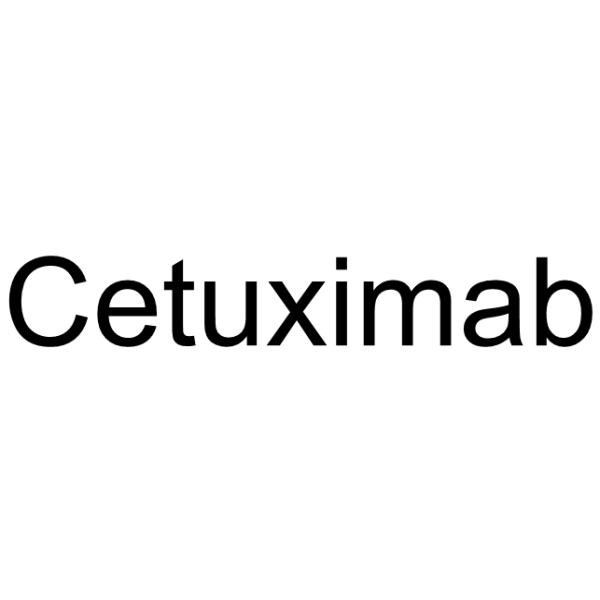store at low temperature
store at -20°C

Cetuximab (C225) is a monoclonal antibody that is an inhibitor of human epidermal growth factor receptor (EGFR) (Kd=0.201 nM). Cetuximab has antitumor activity, inhibiting tumor cell proliferation and inducing apoptosis.

| Pack Size | Availability | Price/USD | Quantity |
|---|---|---|---|
| 1 mg | In stock | $ 197.00 | |
| 2 mg | In stock | $ 289.00 | |
| 5 mg | In stock | $ 482.00 | |
| 10 mg | In stock | $ 697.00 | |
| 25 mg | In stock | $ 1,090.00 | |
| 50 mg | In stock | $ 1,470.00 | |
| 100 mg | In stock | $ 1,980.00 |





| Description | Cetuximab (C225) is a monoclonal antibody that is an inhibitor of human epidermal growth factor receptor (EGFR) (Kd=0.201 nM). Cetuximab has antitumor activity, inhibiting tumor cell proliferation and inducing apoptosis. |
| Targets&IC50 | EGFR:0.147 nM (Kd, Fixed A431 cells) , EGFR:0.201 nM (Kd) |
| In vitro |
METHODS: Human squamous cell carcinoma (SCC) cells SCC-13Y, SCC-38, SCC-1, and SCC-11B were treated with Cetuximab (30 nM) for 8 days, and cell numbers were measured using a hemacytometer. RESULTS: Cetuximab inhibited cell proliferation of SCC cells in a time-dependent manner. Cetuximab inhibited the growth of SCC cell lines in a time-dependent manner, ranging from 20%-75% compared to untreated controls. [1] METHODS: EGFR mutant cells PC-9 and EGFR wild-type cells PC-14, A549 were treated with Cetuximab (10-100 µg/mL) for 24 h, and the expression levels of target proteins were detected by Western Blot. RESULTS: EGFR phosphorylation was strongly expressed in PC-9 and continued to be strongly expressed during Cetuximab treatment.In PC-14 and A549 cells, although the increase in EGFR phosphorylation was reduced by the addition of Cetuximab, phosphorylation was not completely inhibited at the highest concentration. [2] |
| In vivo |
METHODS: To assay antitumor activity in vivo, Cetuximab (1 mg/injection) was administered intraperitoneally to BALB/c (nu/nu) mice harboring HNSCC tumors UT-SCC-2 or UT-SCC-14 on the 10th, 13th, and 16th days after tumor cell injection. RESULTS: Cetuximab treatment reduced tumor growth in HNSCC xenografts and increased local oxygen partial pressure in tumors. [3] METHODS: To study in vivo antitumor activity, Cetuximab (0.25-1 mg/mouse) was administered intraperitoneally to nude mice bearing xenograft tumors every three days for a minimum of five injections. RESULTS: Treatment with Cetuximab alone effectively delayed the growth of GEO and L2987 tumors for at least 10 days. Borderline activity was observed in A549 and WiDr xenografts. However, Cetuximab did not show any significant anti-tumor activity in HT29, HCT116, LOVO, Colo205, LX-1, HCC70 and N87 models. [4] |
| Synonyms | Cetuximab (anti-EGFR), C225 |
| Molecular Weight | 152 kDa |
| Formula | C107H179N35O36S7 |
| CAS No. | 205923-56-4 |
store at low temperature
store at -20°C
You can also refer to dose conversion for different animals. More
bottom
Please see Inhibitor Handling Instructions for more frequently ask questions. Topics include: how to prepare stock solutions, how to store products, and cautions on cell-based assays & animal experiments, etc.
Cetuximab 205923-56-4 Angiogenesis JAK/STAT signaling Tyrosine Kinase/Adaptors EGFR Inhibitor Epidermal growth factor receptor ErbB-1 inhibit Cetuximab (anti-EGFR) C225 C-225 C 225 anti-EGFR HER1 inhibitor
